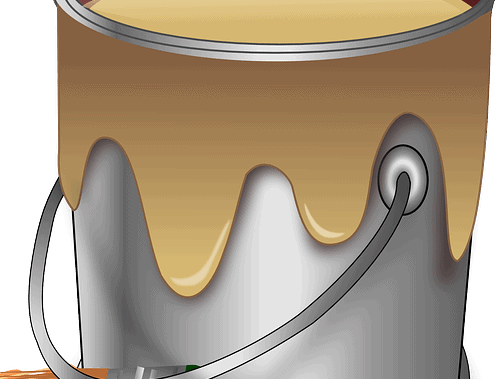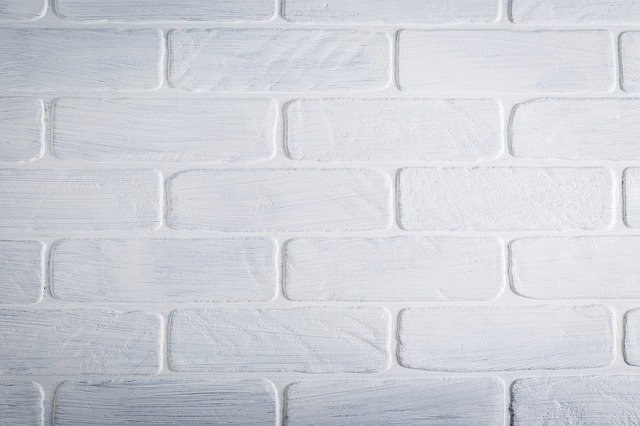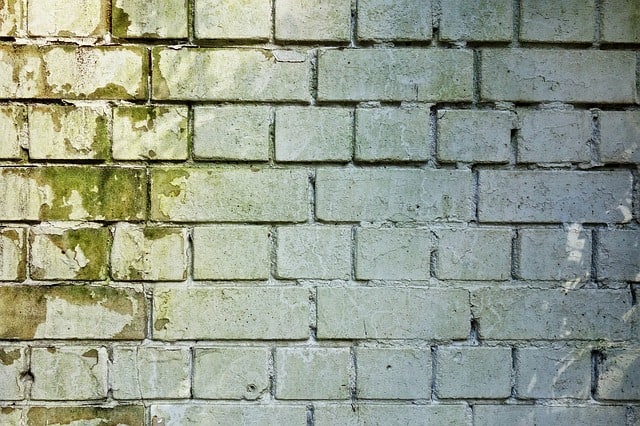How to Paint a Metal Interior Door
Have you ever considered painting your metal interior door freshly? Door painting is necessary as it will not only improve the overall service life but also boost the aesthetic impression. 
Often, homeowners face challenges when coating metal interior door, especially while selecting the paint and prepping the surface. Undertaking wrong painting procedure and paint preparation has always led to peeling, chipping, and scuffing. Could you be facing similar problems?
On how to paint a metal interior door, choose the right tools and material, remove the door and hardware (if not fixed permanently), clean the door with a degreaser, and remove old paints before sanding the surface.
Further, select and prepare the primer as per the manufacturer’s instructions, gently apply the primer, select and prepare the finish paint, apply to finish paint intermittently to achieve quality stickiness, and leave the door to dry naturally before replacing the hardware and fixing it back.
Notably, wear the protective gear for safety purposes and consider a professional painter in case you are new to painting activity. Remember, quality paint finish is a function of adherence to instructions and procedures given in this article.
Details: How to Paint a Metal Interior Door
a. Select material needed when painting
- A paintbrush and Screwdriver
- Hammer and Degreasing cleaner
- Sawhorses and Fine-grit sandpaper
- Waterpoint and Paint scraper
- Respirator/Dust mask and safety goggles
- An Exterior primer and Painter’s tape
- Trim-size paint roller and Satin exterior paint
- Paint tray and Short-nap roller cover
- Overall/Dustcoat and Safety Boots
- Blower and Sander – optional
b. Remove the Door and the Hardware
- Wear the protective gear – safety goggles, overalls, boots, respirator, and gloves
- Using a hammer or screwdriver, remove the door and hardware
- Unpin the hinges, lock mechanism, and latches from the fasteners
Failure to remove the door may lead to incomplete paint coating in some sections. Usually, the paintbrush may not access some areas.
c. Clean the Door with a Degreaser
- Dip a piece of cloth in a degreaser and smear the door surface gently
- Allow the degrease to quench the door for a given time period – 20 minutes
- Clean the surface with the piece of cloth to remove move dust, oil, or grease
- Degreaser is used to remove oil, grease, dirt, or grime from the surface.
d. Remove Old Paint
- Apply paint stripper on the door and leave it to cure
- Using a paint scraper or a putty knife, scrape off old paint gently
- Alternatively, consider a heat gun for thick paint. the heat gun melts the paint to a state, which is more comfortable to remove
- Repeat the steps above until the entire old paint is removed
- Mop the surface with water and soap to remove paint traces
- Rise the surface to dry
e. Sand the Door
- Plug the sander in the power supply and switch on
- Gently, run the sander over the surface to remove paint remnants and surface ruggedness
- Alternatively, use 400-grit sandpaper to clean and polish the metal surface. Moreover, avoid over pressing the sandpaper in order to protect the primary material from damage.
- Using a blower, blow off the dust and surface debris from the sanded metal surface – dust and debris impairs paint stickiness level
f. Select and Prepare primer
When selecting the primer, consider the finish paint that you intend to use eventually. The oil-based primer should be used with oil-based finish paint and vice versa.
Prepare the primer as per the instructions given by the manufacturer. A well-prepared primer should load on the paintbrush or the roller without much drain.
g. Apply Primer
- Dip a paintbrush in primer and load it sufficiently – cut off paint overload
- Gently, apply primer over the metal interior door back and forth
- Cut corners with an angled paintbrush
- Repeat the steps above until the entire surface is primed
- Leave the primer to dry as per the manufacturer’s directives
You can consider using a roller on a flat metal surface (it’s faster). For the best quality prime finish, go for a paint sprayer.
h. Select and Prepare Finish Paint
Consider interior paint for your metal door paint application. The paint can either be oil-based or semi-gloss.
Interior base paint has fewer VOC components and safer for the human respiratory system – won’t cause nasal irritation when inhaled.
Select finish paint that is fast-drying, fade-resistant, and available optional colors. Carry out paint preparation as advised by the manufacturer.
i. Apply Finish Paint – Various Coats
- Dip a paintbrush or a roller in paint solvent and load it sufficiently
- Carry out the paint application process gently, back and forth until the entire metal door surface is painted
- Leave the first coat to dry – for 4 hours or otherwise educated
- Apply the second coat and leave it to dry
- Cover the door with a polyethylene bag if the environment is dusty to prevent dirt from staining
j. Replace Hardware and Fix the Door
Once the door has dried to touch, replace the hardware back to the position. Screw locks, latches, and hinges into place.
Then, fix the door back to its position. Be careful when lifting and touching door parts not to stain yourself – some painted section me not have cured completely.
Major Problems of Unpainted Metal Interior Door?
Failing to paint your metal interior door may lead to some of the following problems:
1. Rusting
Rusting is commonly known as corrosion or oxidation of the iron metal. Iron metal rusts when exposed to a moisture/humid environment in presence of oxygen.
Painting is one method of eliminating rust from metal surfaces. The paint lay prevents water and oxygen (agents of rusting) from getting into contact with the metal surface.
2. Fast Aging
Unpainted metal age faster than painted ones. Usually, the primary metal surface is exposed to external factors such as UV-rays that weakens the structure bonds with continuous exposure.
The paint coat protects the surface metal from external harsh conditions and thus boosting the entire service life.
3. Loss of Impressive Outlook
Mild steel (iron) rust or loose its initial outlook appearance if not painted.
The Primary surface material reacts with external conditions forming a layer, which is not attractive or impressive.
Rust formed on the metal door is kills the aesthetic outlook and lowers the service life.
The painted door look impressive and beautifies the interior house compartments.
4. Health Hazard
When an unpainted door undergoes rusting, the surface becomes a health hazard. Rust metal is poisonous when inhaled or touched with naked hands.
Further, unpainted metal doors age faster, and the parts brakes easily forming hazardous protrusions that may cause injuries.
5. Loss of material Strength
Painting metal doors improves overall material strength by maintaining the original metal structure from the external harsh conditions.
Rust metal has low material strength and tends to bend and fail easily when subjected to any strain energy.
Challenges of Poorly Painted Metal Interior Door
Painting metal interior door is a better way of improving overall service life and boosting its outlook appearance.
However, wrongly painted metal interior doors are faced by some of the following problems:
a. Peeling and Flaking
Peeling and flaking of the painted metal door occur due to wrong paint preparation procedure, wrong paint selection, and insufficient surface preparation.
The metal surface has low paint stickiness ability and initiates peeling or flaking with time upon application.
Moreover, wrong paint preparation leads to incomplete solvent activation, which results in a low stickiness level.
b. Fading
Low-quality paint is susceptible to fading upon application. The color pigments within the paint chemical structure lose the initial appearance and end up being dull or plain.
The problem of fading can be sorted out by selecting high-quality finish paint, which has a fade-resistant factor.
Moreover, you can consider applying two or three paint coats to boost the outlook quality.
c. Chipping
Chipping is the disintegration of paint coat sections due to exposure to humid or wet surface contact.
Chipping is common to the interior doors that are located near damp areas like kitchen or washrooms.
When painting, consider waterproof finish paint for doors used in damp or wet areas.
Safety & Precaution for Painting Metal Interior Door
Safety is paramount when painting the metal interior door. Hence, you need to follow the precautions highlighted below strictly:
- Always wear protective gear before you commence the painting process for your own personal safety.
- Always follow the manufacturer’s instructions when preparing primer and finish paint for the metal interior door.
- Before preparation, check the expiry date of primer and finish paint. Avoid using expired paint or primer whatsoever.
- Upon preparation of primer or finish paint, carry out a drop test experiment to ascertain the quality of paint stickiness over the metal surface.
- Never smell the paint of primer directly since the compound may have components that may irritate your respiratory system when inhaled.
- Sand the metal surface sufficiently before any priming or painting is carried out.
- In case you get into contact with paint or primer, wash the area with plenty of water and soap.
Paint and primer that remain should be stored away from pets and kids to prevent intoxication if swallowed.
If you are new to paint application, consider a professional painter when painting your metal interior lord.
See Also: Turbine Paint Sprayer
Conclusion
Having read this article on how to paint a metal interior door, I believe you that gained a deeper insight that will not only help you eliminate poor quality paint finish, but also assist you when undertaking DIY projects.
When painting, you need to choose the right tools and material, remove the door and hardware (if not fixed permanently), clean the door with a degreaser, and remove old paints before sanding the surface.
Select and prepare the primer as per the manufacturer’s instructions, gently apply the primer, select and prepare the finish paint, apply to finish paint intermittently to achieve quality stickiness, and leave the door to dry naturally before replacing the hardware and fixing it back





